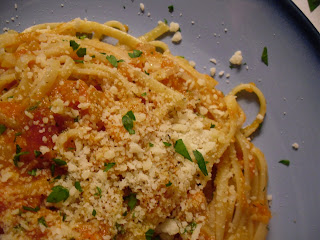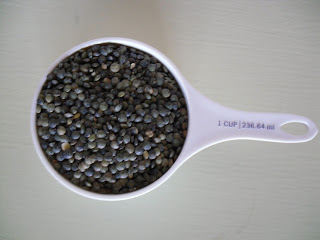I suppose there will be an ebb and flow of emotions with anything you love, and I have been experiencing low tide regarding both my creativity and enthusiasm for cooking. Unfortunately, my stove has been as barren as my blog; however, I am hoping that dropping temperatures and decreasing daylight will reignite my interest, as my favorite comfort foods become increasingly appropriate (there should be something positive to glean out from these first glimpses of winter).
Soup is a universally loved cold-weather comfort food, and this soup is a mushroomy masterpiece. If this mushroom soup had a motto, it would be “go big or go home.” It has two pounds of fresh mushrooms, plus dried porcinis, which are added to sautéed onions and garlic. This may sound a bit excessive, and when you first add them to the pot, you may think you have done something seriously wrong, as your aromatics become overwrought by sliced shrooms. Do not fear: mushrooms contain a lot of liquid, and they will shrink significantly as they sauté. They will also lead to unparalleled mushroom flavor, accented by fresh rosemary. The original recipe called for both fresh sage and fresh rosemary. In an effort to streamline and save myself a couple of bucks, I chose to add rosemary alone. After all, mushrooms and rosemary play so nicely together that I figured the single herb should suffice. The meaty savoriness of mushrooms stands up assertively to rosemary’s piney, earthy warmth. Essentially, the onion, garlic, rosemary, and mushrooms are simmered together with some stock, and finished with heavy cream. It’s just half a cup, so don’t do something lame, like replace it with skim milk. Before I added the cream, I snuck a little sample of soup, and it was so meaty and savory that I questioned adding it for about a millisecond. But I forged on, heavy cream in hand, and the difference it made was completely invaluable. There is something about saturated fat that simply brings out the best in things. As with most cream of mushroom soups, this one is inevitably blended, but please do so with caution, and leave some chunks of mushrooms. After all of that time cleaning and slicing, it would be a crime to pulverize them.
Cream of Mushroom Soup (adapted from Smitten Kitchen)
3 tablespoons olive oil
1 large onion, chopped
3 garlic cloves, minced
2 sprigs fresh rosemary
Kosher salt
Fresh ground pepper
½ oz. dried porcini mushrooms
1 cup very warm water
1 lb. white button mushrooms, sliced
1 lb. cremini mushrooms, sliced
2-14 oz. cans reduced sodium chicken broth
1-14 oz. can beef broth
½ cup heavy cream
- Steep dried mushrooms in 8 ounces of very warm water for 20-30 minutes. When mushrooms are plump, lift them from the water (leaving as much grit behind as possible), and coarsely chop them. Strain soaking liquid through a coffee filter to remove grit (I actually lined a fine mesh sieve with a paper towel, and that worked fine, and so far I’m still alive). Set aside mushrooms and soaking liquid.
- In a large soup pot, head olive oil over medium heat. Add chopped onions, garlic, rosemary sprigs, 1 teaspoon of salt, and lots of pepper.
- Sauté for 10 minutes, or until soft and translucent, stirring frequently.
- Increase heat to high and add all of the sliced mushrooms. Stirring frequently, sauté for 10 minutes, until mushrooms give off liquid and reduce significantly in volume. Stir frequently, especially when you first add them to prevent burning. (You may want to lower the heat initially until the mushrooms begin to release liquid).
- Add chicken stock, beef stock, reserved mushroom soaking liquid, and porcinis.
- Allow the soup to simmer (over about medium heat) for 30 minutes. Remove rosemary sprigs, add cream, and blend with immersion blender until it is the desired consistency. This could also be done in a blender, but be sure to do it in batches, with the blender about half full and vented.
- Keep soup at a bare simmer (to prevent cream from curdling), and serve soup with good bread and extra virgin olive oil.



















































